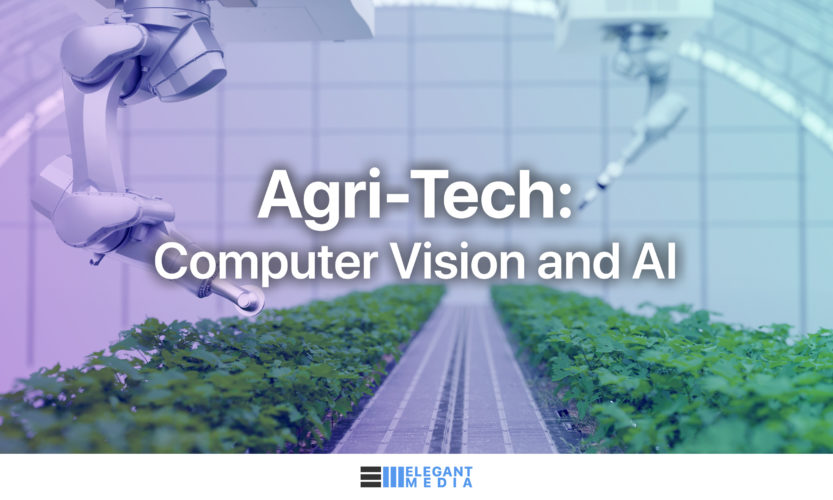The integration of Computer Vision and Artificial Intelligence (AI) into Agricultural Technology (Agri-Tech) is revolutionising the industry, offering unprecedented opportunities to enhance productivity, efficiency, and sustainability. These technologies are at the forefront of the agricultural sector’s transformation, enabling precision agriculture and smart farming practices that are significantly boosting crop yield and optimising resource use.
The Advent of Computer Vision and AI in Agriculture
Computer Vision and AI are harnessing the power of advanced algorithms and machine learning models to analyse vast amounts of data captured from drones, satellites, and ground-based sensors. This analysis provides critical insights into crop health, soil conditions, and environmental factors affecting agriculture. By automating and refining decision-making processes, these technologies are making farming practices more intelligent and responsive.
Applications
Disease and Pest Detection
Computer Vision algorithms can identify disease and pest infestations at early stages, enabling timely intervention and reducing crop damage. This precision reduces the need for widespread pesticide use, leading to more sustainable farming practices.
Yield Prediction and Crop Monitoring
AI models analyse data from various sources to predict crop yields with high accuracy, allowing farmers to make informed decisions about resource allocation and market positioning. Continuous monitoring ensures that any deviations in crop growth or health are quickly identified and addressed.
Weed Management
Computer Vision distinguishes between crops and weeds, allowing for targeted weed control measures that significantly reduce herbicide usage. This not only cuts costs but also minimises environmental impact.
Resource Optimization
AI-driven systems optimise the use of water, fertilisers, and other inputs by accurately assessing crop needs. This ensures that crops receive precisely what they need for optimal growth, avoiding waste and reducing environmental footprint.
Developing Technologies
Automated Robotic Fruit Picking
Computer Vision guides robotic systems in identifying ripe crops for harvest, reducing labour costs and minimising post-harvest losses. At the heart of autonomous robotic fruit picking is a sophisticated blend of AI and computer vision, enabling robots to identify, select, and pick ripe fruits with precision.
These robots are equipped with sensors and cameras that capture detailed images of the fruits and their surrounding environment. Advanced AI algorithms then analyse these images in real-time to distinguish ripe fruits from unripe ones and to navigate the robot’s movements, ensuring that the fruits are picked without causing any damage to the plant or the fruit itself.
Revolutionising Farming with Drone equipped with Computer Vision and AI
The intersection of drones, computer vision, and artificial intelligence (AI) marks a new dawn in agricultural technology, offering innovative solutions to age-old farming challenges. This powerful combination is revolutionising the way we approach crop management, pest control, and farm efficiency, paving the way for a future where precision agriculture becomes the norm.
Smart farming leverages technology to increase the quantity and quality of agricultural products. Among the technological advancements, drones equipped with computer vision and AI capabilities stand out for their potential to transform traditional farming methods. These drones offer a bird’s-eye view of farmland, capturing data that, once analysed, can significantly optimize farming practices.
Drones, or unmanned aerial vehicles (UAVs), have become invaluable tools in the farmer’s arsenal. They can cover large areas quickly, providing real-time data that helps in making informed decisions. When equipped with imaging sensors, drones collect a wealth of information, from topography and vegetation indices to moisture levels and crop health.
Impact on Productivity and Yield
The adoption of Computer Vision and AI in agriculture is leading to a marked increase in crop productivity and yield. Farmers can maximise output while minimising inputs and losses through precise monitoring and management. Moreover, these technologies are making agriculture more resilient to climate change by enabling adaptive practices that can withstand environmental stresses.
Challenges and Future Directions
Despite their potential, the widespread adoption of these technologies faces challenges, including high initial costs, the need for technical expertise, and concerns about data privacy. Future developments will likely focus on making these technologies more accessible and user-friendly, enhancing interoperability with existing farming systems, and ensuring data security.
How Elegant Media Can Help overcome these challenges?
Elegant Media, with its expertise in developing and implementing innovative technology solutions, is ideally positioned to address these challenges:
- Customised Cost-effective Solutions: By developing tailor-made solutions that align with the specific needs and constraints of each farm, Elegant Media can help minimize the barriers to entry for adopting these technologies at an affordable cost.
- Security and Privacy: Elegant Media places a strong emphasis on data security and privacy, ensuring that all solutions comply with the highest standards, thereby safeguarding farmers’ data.
- Capacity Building and Support: Elegant Media provides comprehensive training and ongoing support to farmers and agricultural businesses, making the technology more accessible and easier to use.
- Integration Expertise: With its deep experience in technology integration, Elegant Media ensures that new solutions work seamlessly with existing agricultural systems, enhancing efficiency without disrupting established practices.
Conclusion
Computer Vision and AI are pivotal in transforming the agricultural industry, offering innovative solutions that enhance productivity and sustainability. As these technologies continue to evolve, they promise to unlock even greater potential for precision agriculture, contributing significantly to global food security and environmental conservation. The future of farming lies in embracing these advancements, heralding a new era of efficiency and yield optimisation in agriculture.






